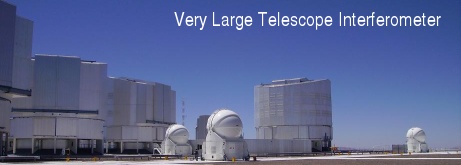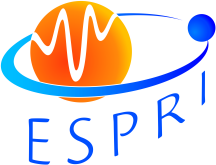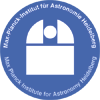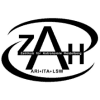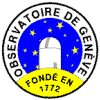|
|
Overview of ESPRI
|
PRIMA, the instrument for Phase Referenced
Imaging and Micro-arcsecond Astrometry, will
implement the dual-feed capability at the ESO Very
Large Telescope Interferometer (VLTI). In
order to implement the Micro-arcsecond Astrometry and conduct an
astrometric Exoplanet Search program with PRIma
(ESPRI), MPIA together
with the Landessternwarte
Heidelberg and the Geneva Observatory have
formed a consortium to build Differential Delay Lines
(DDLs) for PRIMA and to develop the astrometric operation and
software tools.
|
|
ESPRI will astrometrically measure the reflex motion of the star. For
nearby stars it will be more sensitive to planets in Earth-like
orbits than radial velocity surveys. It allows planet masses to be determined
without the sin(i) ambiguity, and can detect planets in face-on
orbits.
The accurate differential-astrometry measurements will be achieved by
simultaneously observing the target and a reference star separated by a small angle, using the dual-feed PRIMA
facility at the VLTI interferometer. Further details of this approach for
detecting extra-solar planets can be found in the Method section of this website.
The principle hardware contributions
to PRIMA from MPIA are the cats-eye retro-reflectors for the
differential delay lines (DDLs). MPIA has also had a major role in the
development of the science case, observing strategy, observation planning, error
budget and software for the ESPRI
program.
|

Perform astrometric planet search program with PRIMA@VLTI
|
| |
Consortium proposes to ESO |
 |
|
 |
Consortium is rewarded with GTO time |

Build differential delay lines for PRIMA
and
develop astrometric operations and software tools
|
|
Principle project milestones
- BDR — Baseline Design Review,
September 2003. During this review, which was internal to the Consortium,
the baseline design to be proposed to ESO (Technical and AOS Proposal)
was reviewed and preliminary specifications were released. The scientific
objectives were summarized in the Scientific Proposal. Also, the first
issues of the Management Plan, Project Plan and Financial Plan were
presented to the Partners.
- KO — Kick-Off, 23rd June 2004. The project
Kick-Off involved the signing of an agreement between ESO and the
Consortium. It defined the time T0 for the project schedule.
- PDR — Preliminary Design Review,
27th June 2005. During the PDR every WP manager presented his work
package and the design of the corresponding subsystem or software
package. The design and the interfaces were reviewed jointly by ESO and
the Consortium. After successful evaluation, ESO granted authorization to
start with the detailed design phase.
- FDR — Final Design Review, 3rd
April 2007. At the FDR, WP managers presented their work packages. The
detailed design was passed jointly by ESO and Obs. de Geneva.
- IRR — Integration Readiness Review,
February 2008. This review has taken place for the AOS and the DDLs just
before the integration started, since otherwise the period between FDR and
PAE would have been too long. The idea would be to ensure that all components,
subsystems and SW modules are ready and tested before starting the
integration.
- PAE — Provisional Acceptance
Europe, June 2008. The PAE took place after successful
integration and test of the AOS and of the instrument in Europe. The AOS
and the DDL review can be separated. The DDL review took place
shortly before the DDLs left for Paranal. The review helped to verify
whether the performances, safety and reliability requirements are met in
laboratory, and to decide whether the instrument is mature enough for
Paranal operation.
- PAC — Provisional Acceptance
Chile. The PAC shall take place after astrometry commissioning in
Paranal. ESO will grant the Provisional Acceptance of the project,
provided that the technical and operation requirements are
fulfilled.
- FAC — Final Acceptance Chile. The
FAC for the AOS shall take place after 3 years of operation. ESO will
then grant the Final Acceptance of the project.
|
|
|
